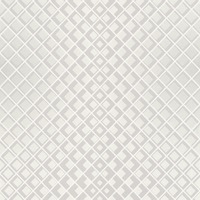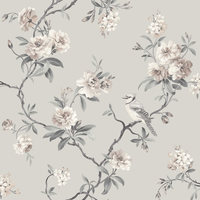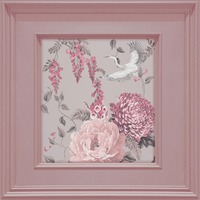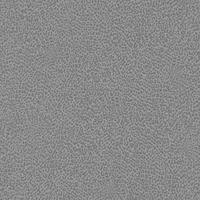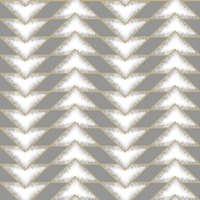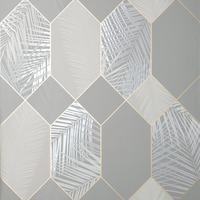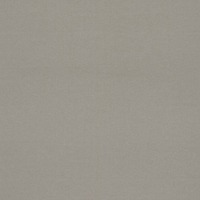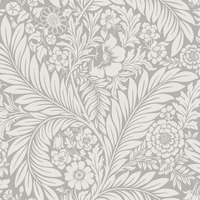Hot Tips on Choosing the Perfect Wallpaper
View more grey wallpaper here>>
Wallpaper is a material used in interior decoration to decorate the interior walls of domestic (usually home) and public buildings. It is usually sold in rolls and is applied onto a wall using wallpaper paste.
Wallpaper has been around for hundreds of years with the earliest mention in Europe dating to 1481 and at that time consisted of individual sheets pasted together before painting. In 1712 a tax was introduced on the manufacture of printed, painted or stained paper, based according to the square yard, so clearly Wallpaper had become established as a form of decoration for the middle class and the Treasury considered it a commodity worth taxing. At this time the earliest printed wallpapers were produced by block printing, where the image is cut, in relief, onto the surface of a hardwood block. It was an indication of one’s wealth and status and was originally intended as decorative art in its own right.
Wallpapering has become increasingly common for the everyday homeowner. Wallpaper comes in a variety of materials, colours, styles and patterns and is a great way to give your interior walls an instant facelift. With so many options to consider. Where do you start? Here we have Top Tips on Choosing the Perfect Wallpaper.
Types of Wallpaper
Paper Wallpaper
Paper wallpaper has no fabric or vinyl fabric covering, therefore it’s more delicate and can be easily torn. It’s not the best choice for high-traffic areas. Paper wallpaper is made in a variety of colours and patterns and price ranges.
Vinyl Wallpaper
Vinyl wallpaper is made by stretching a vinyl film over a paper backing. It’s durable and good for high-moisture areas as it has a protective film, meaning it can be used as kitchen or bathroom wallpaper. Another advantage is that it can be easily printed on and embossed, therefore it can be designed to imitate other materials such as brick or wood. Finally, it’s easier to remove than other papers.
Flock Wallpaper
Flocked wallpaper offers a beautiful, velvety texture and often features ornate, decorative patterns. It’s better for low-traffic areas of the home as its delicate surface makes it difficult to clean.
Fabric/Woven Wallpaper
Fabric wallpapers are made from linen, cotton, or polyester. These are more delicate types of wallpaper and give a luxurious feel to a room. They’re more difficult to install than vinyl or non-woven wallpaper but add wonderful softness and texture.
Non-Woven Wallpaper
Non-woven wallpaper blends natural and synthetic fibres. It’s a great choice for any room in the home as it’s both washable and breathable. It’s a popular alternative to vinyl wallpaper, is easy to install, and can be removed dry without needing water or steaming.
Foil Wallpaper
Foil wallpaper is made of a thin sheet of foil and a paper backing, creating a unique, metallic look. This type of paper is fragile and quite difficult to hang, so it might be worth contacting a professional to help with the installation. It might cost you, but the variety of textures, patterns and finishes will make it worth the investment.
Grass Cloth Wallpaper
This type of wallpaper is made from natural grasses and/or natural fibres. It’s recommended that these coverings are hung by professionals as they need special attention, but once they’re up they add a beautifully calming atmosphere. This type of wall covering is not suitable for high-traffic areas, or places with a lot of moisture.
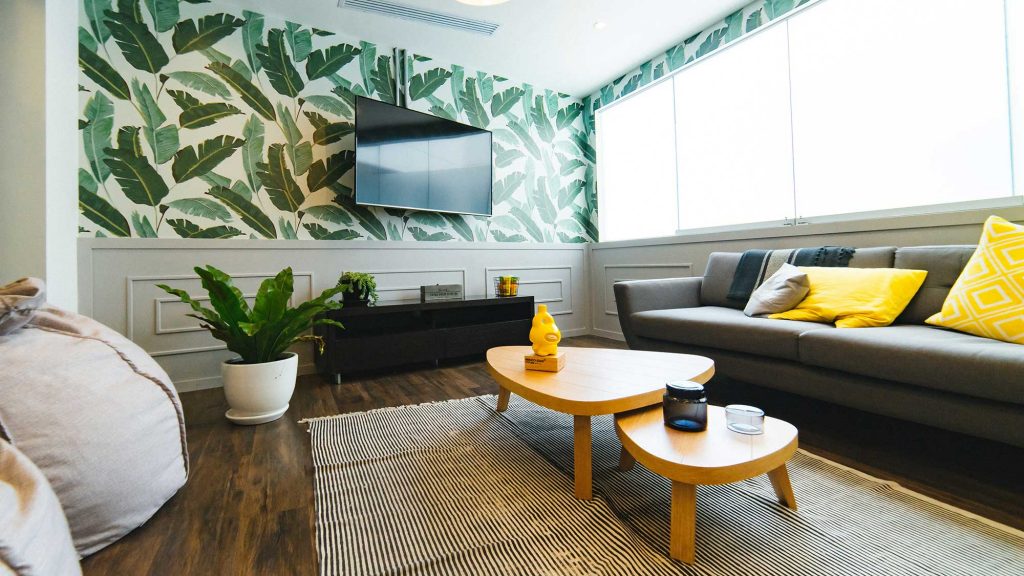
Which Wallpaper is Best
Think carefully about where the wallpaper is going to be used and the wear and tear it will have to endure.
- High-traffic areas: If you’re planning on using wallpaper in busy thoroughfares, such as a hallway, it will be susceptible to more wear and tear than other areas of the home. Consider a wallpaper that is made from a durable material such as fabric or vinyl, to keep it looking its best for longer
- Kitchens and bathrooms: Washable vinyl wallpaper is a great option for kitchens and bathrooms that are regularly exposed to steam and moisture. It tends to be thicker than other types of wallpaper, which makes it not only durable but also great for hiding imperfections in your walls, such as small cracks and uneven surfaces. A huge extra bonus is that it’s easy to clean; stains can usually be wiped away
- Children: If you have young children, be mindful of your colour choice. Light colours can be tarnished by unwanted marks, such as pens or crayons, whereas bold, patterned papers are more forgiving. Vinyl wallpaper is a great wipe-down option, or try a washable design. This is also a good option if you have pets.
Consider the style of the room that you’re decorating:
- If it’s romantic, try delicate damasks and florals with fine lines in muted, pastel colours.
- If it’s casual, faux finishes such as beadboard and stucco are simple, casual options. Pairing beadboard wallpaper with organic, flowing floral designs also makes for an at-home, relaxed feel.
- If it’s contemporary/fashion-forward, consider bold geometrics with high gloss and metallic accents. Large-scale and bold florals also make a high-fashion statement this year.
- If it’s traditional, check out intricate damasks and stripes, which coordinate perfectly with traditional furnishings and decor.
How You Will Use Wallpaper in the Room?
Figure out how you plan to use the wallpaper in the room. All styles don’t work in the same way. Here are the various options:
- Cover all four walls. A classic, simple stripe design hung horizontally on all four walls gives a fresh contemporary look. Large-scale and simple designs will not overwhelm a room but add a trendy twist.
- Feature one wall. Choose a dramatic, bold pattern to highlight an area of a room, such as behind a sofa or bed. Designs with a hint of metallic, mica, or gloss will give a classy, glamorous touch.
- Wallpaper with a chair rail. If you are working with a chair rail that divides a wall, it is easy to bring unique interest to it. For a classic look, try paintable beadboard wallpaper for under the chair rail. Above the chair rail, hang a large-scale floral or damask for an updated look. Another interesting way to work with a chair rail is to anchor the wall with a pattern below it, such as dramatic damask wallpaper, and paint a coordinating colour above it. Adding wallpaper in this fashion creates a unique element of surprise not often seen in rooms.
- Add interest to the ceiling. Painted in a classic metallic shade, you can easily achieve a Victorian-style tin ceiling look.
Backing Paper Choices
After determining the colour and style of the pattern you want, it’s best to look for what type of backing the wallpaper has. Wallpaper with a non-woven backing will be fully strippable when you wish a change.
If you’re wallpapering for the first time, avoid very small patterns with offset matches. For these, the designs can be difficult to match up in repeat.
Flat and Textured Patterns
Choosing a flat or textured design is all about personal style. In general, textured patterns give a more casual look to a room, whereas flat designs can make a wall more refined. Textured wallpapers can give a wall some dimension and also do an excellent job of covering imperfections. Some textured wallpapers are paintable for a monochromatic look. The actual patterns of textured wallpapers are generally less detailed than a flat pattern.
With flat wallpapers, you have the options of fine detailing in design, and embellishments such as metallic, gloss, or mica effects. If you have imperfections in your walls, but prefer the look of flat wallpaper, using a wall liner as a base layer can give you the added coverage you need.
How Much Wallpaper to Buy?
Follow this guide:
- The general rule of thumb is to order one roll extra than what you need. It is best to get it at the same time as the original purchase to ensure the rolls are from the same product run so there is no variation in colour. A consumer can ensure this by looking at the batch number. If the batch numbers are the same, then there will be no variation in colour. The spare roll is to account for an offset match and mistakes. You can always return unused rolls if they go unused. So don’t forget your receipt and always get on with the wall paperwork straight away to avoid any delays or procrastination later
- Measure all walls and multiply the width by the height of each wall in feet.
- Add all measurements to the total square footage.
- Deduct for windows, doors, and other large openings.
- Check the roll label for how much square foot coverage the roll gives and ensure that the rolling coverage is more than the total wall square footage. Double roll and single roll are industry terms; it is easier for the customer to determine how much wallpaper is needed by looking at the square-foot coverage the roll gives.
